I cycled my first 100-miles - it changed me: 5 things about the experience I’ll never forget
You don't have to only ride your bike to train for a 100 mile ride, but you do have to eat a lot to get to the finish line feeling strong, as Ellie Donnell found out
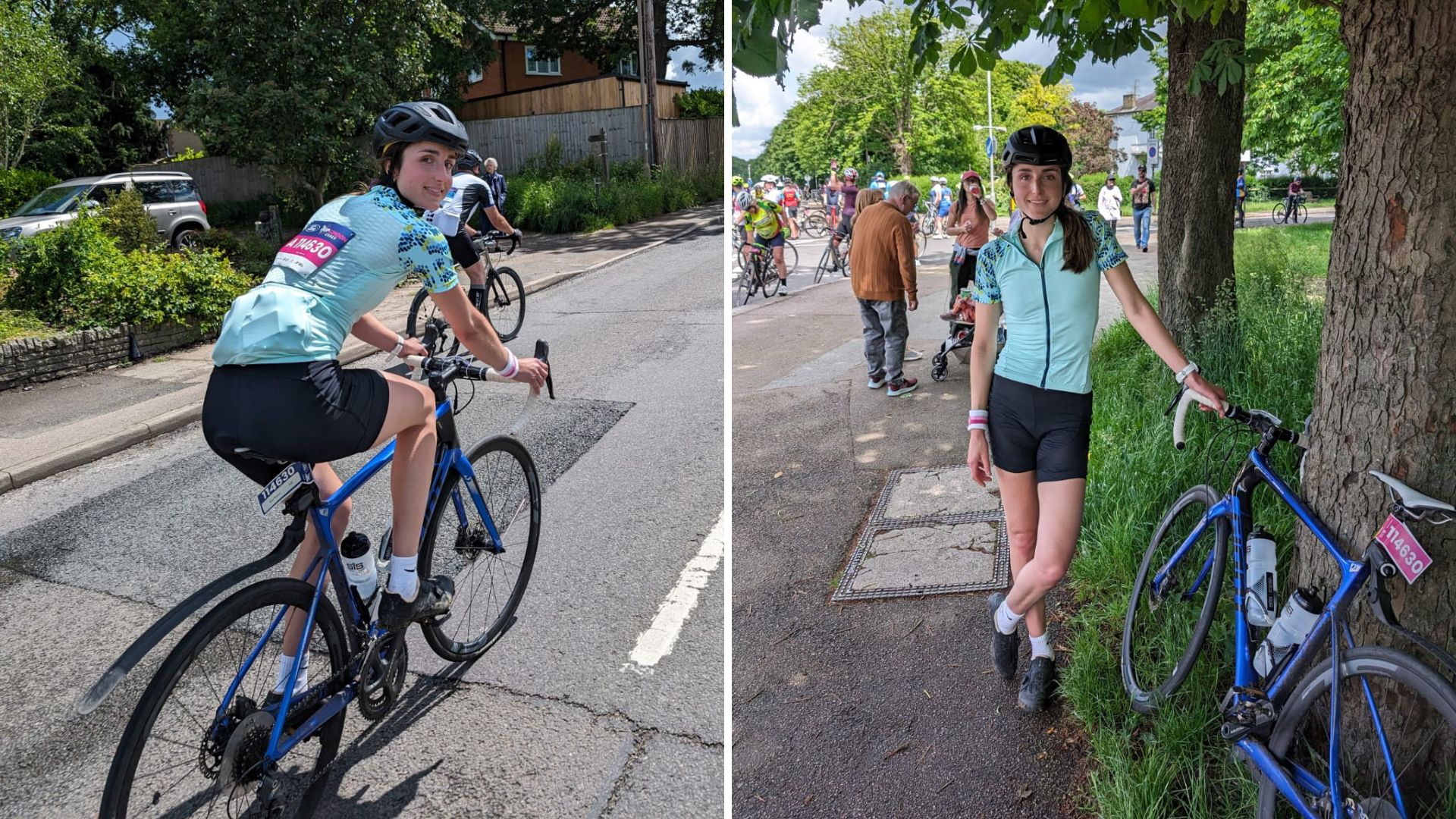
Completing your first century ride is a monumental milestone for any cyclist. One hundred miles is a mighty, unforgiving distance that pushes even the most experienced riders to their limits - but that doesn’t mean amateur cyclists can’t do it too. Five months ago, I signed up to UK sportive RideLondon to test that theory.
I consider myself to be a fairly committed cyclist. I commute to work on my bike, I occasionally partake in long rides at the weekend, and last year I completed my first-ever cycling tour, clocking up a hefty daily mileage along the way. Cycling 100-miles in one day though? That was uncharted territory I was curious to explore.
A century ride is like nothing else I’ve ever experienced. It’s exhilarating, tumultuous and unapologetically brutal. There are stratospheric highs and incomprehensible lows. But nothing beats the exhilarating feeling of riding, quite literally, into the unknown. Here’s everything I learned from cycling my first century.
You don’t need the perfect training plan - but cycling 100 miles requires time and planning
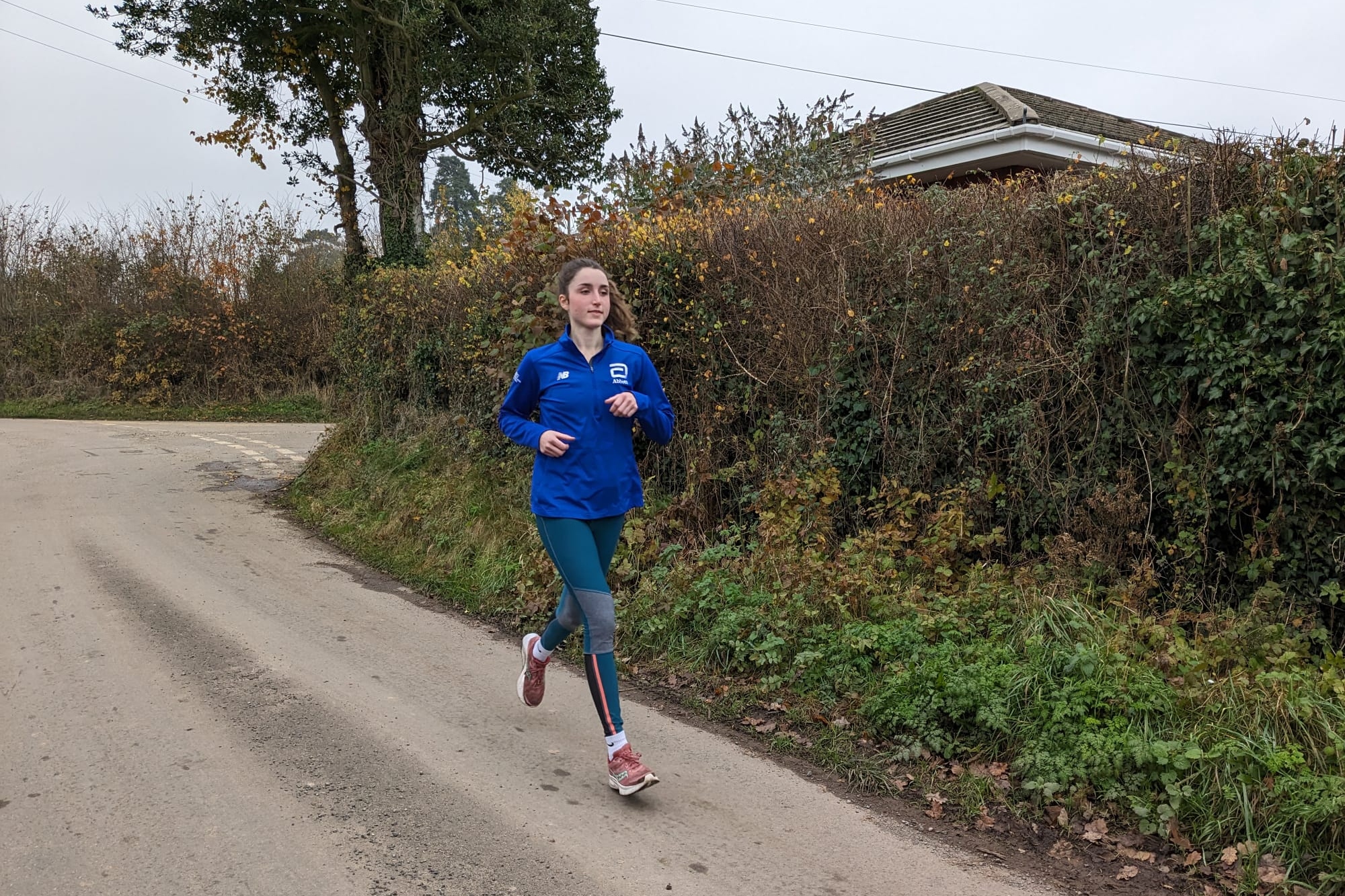
'Hybrid training' makes up a lot of Ellie's fitness base
My 100-mile training plan was admittedly imperfect: a mish-mash of longer rides squeezed into quieter weekends and shorter indoor bike sessions in the week. There was some method to the madness though. I knew I needed to hit a few longer, Zone 2 rides to build up my endurance, and I completed about three 60-milers over the two months prior. Put simply, Zone 2 is your “all-day talking pace”, Zach Nehr explains, and it’s important to hold back the intensity if you really want to gain the benefits of these slower rides.
I also remember a particularly gruesome interval session on the indoor bike at my gym with the aim of improving my power output and overall fitness. Finally, although not really training specific, I was commuting consistently two or three times a week throughout that period.
There were also rides cut short or not completed at all due to wet weather. There was a holiday in Italy a week and a half before race day. There were long gaps between training rides because life got in the way.
The occasional missed ride, however, was perhaps negated by the fact that I already had a pretty solid base of fitness to begin with. I’ve always followed a hybrid approach to training which revolves around running, cycling and weightlifting, and makes it easier to adapt to new challenges. But my body wasn’t used to endurance exercise lasting five plus hours in the saddle, and those longer zone two rides were the most useful addition to my training, preparing me both mentally and physically for hours on the bike.
Get The Leadout Newsletter
The latest race content, interviews, features, reviews and expert buying guides, direct to your inbox!
I struggled to fit proper training rides into the week due to time, but I made a conscious effort to commute to work when I could - about 10 miles a day. And while I didn’t have an average training week per se, I completed most of my more major rides at the weekend, hitting distances of anywhere between 30 and 60 miles. Once I could confidently complete rides lasting four or five hours, I knew that adrenaline and the atmosphere of the event would carry me to finish the line - which it did.
Fuelling is make or break - eat more than you think you need
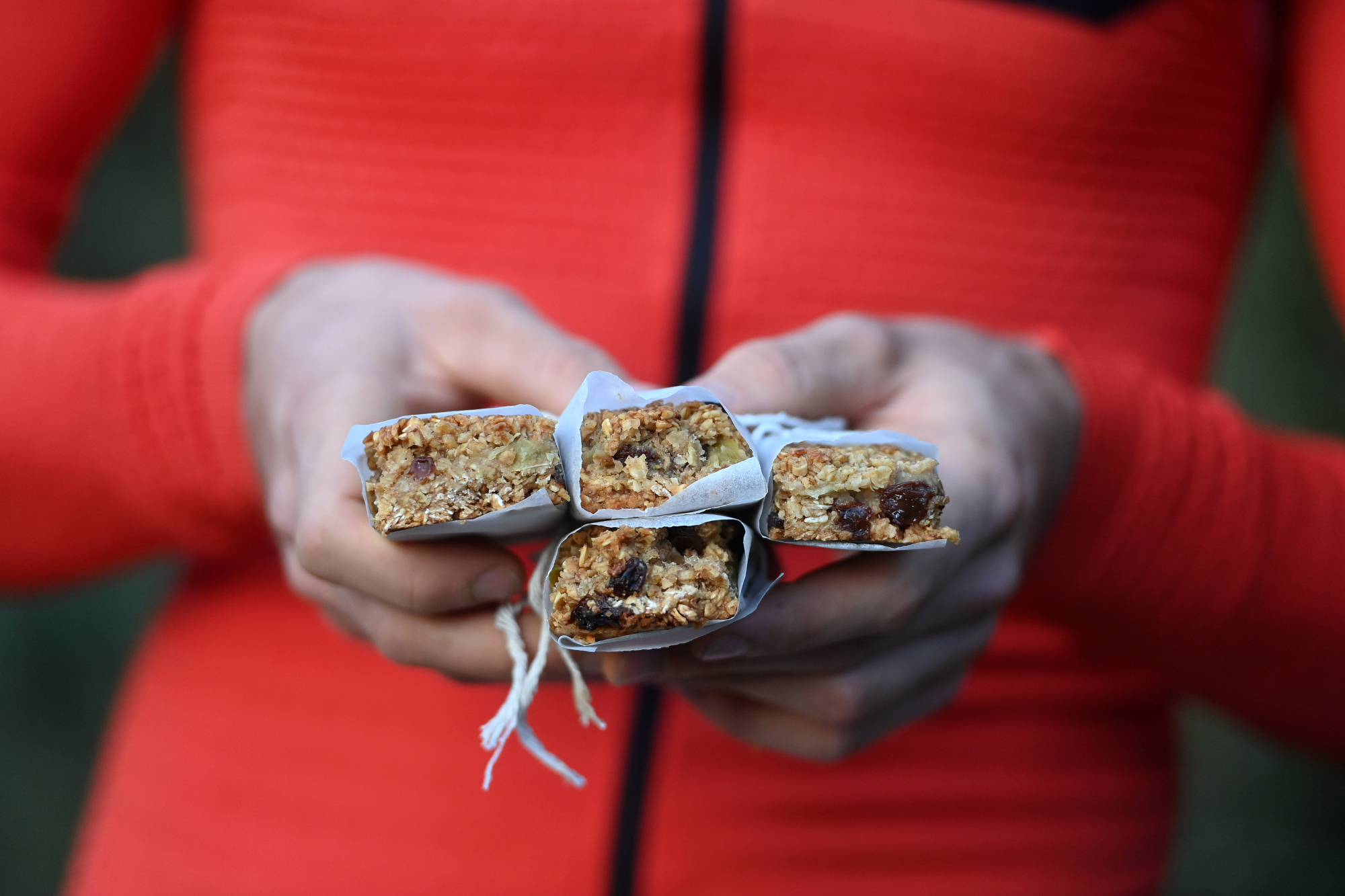
Carbs are essential on the ride, and before
Fuelling can make or break a long ride. Get it right, and you’ll be flying for hours. Get it wrong, and you risk bonking on the bike (when your glucose levels bottom out) - a cyclist's nightmare and one that’s tough to come back from.
A day or two prior to the event, I made a conscious effort to increase my carbohydrate intake so that my glycogen stores were topped up ahead of the big day. Bagels, rice, pasta and cereal formed the crux of each meal which, combined with a lower training load the week before, meant I felt fuelled and energised. Looking back, this was a crucial part of prep that made the first half of the ride feel so much easier.
The practice of carb loading ahead of a big ride is routine among cyclists. Speaking to Personal Trainer and Sports Nutritionist Johan Florez, he explains that endurance athletes should shoot for around 10g of carbs per kilogram of bodyweight one to two days prior to the event to maximise carbohydrate stores. On-the-day nutrition is just as important too. ‘’For exercise lasting more than three hours, you’ll need around 75-90g of carbs per hour on the bike’’, he advises, so I had this in my mind when planning my food choices.
Once the ride began, my food choices revolved around solid fuel like bananas and bagels for the first three hours, and I made a conscious effort to keep these as savoury as possible (things like peanut butter, and cheese and marmite, as fillings). This worked really well because I knew I would probably need to rely more on gels further into the ride, but also to avoid sweetness ‘fatigue’, a common problem for endurance athletes participating in longer challenges.
From 65 miles, everything started to feel harder. Fatigue was gnawing at the edges of my psyche and I was suddenly aware of an acute craving for sweet foods, an indicator that I was in desperate need of fast-acting sugars as my glycogen stores started to run low. A fresh bout of headwinds had also struck on the turn back towards London, causing my pace to slow and my RPE (rate of perceived exertion) to spike.
The final 20 miles were the hardest. In hindsight, although I was still consuming solid snacks, I should have had a couple more gels here to fuel the last hour and a half. It’s so tempting to think you’re close to the end and don’t need to fuel as hard as at the start of the ride, but actually the opposite is true - it’s those final miles where nutrition becomes even more paramount.
Cycling with a large group will make the ride easier - but practice a few group rides before committing to a 100-mile event
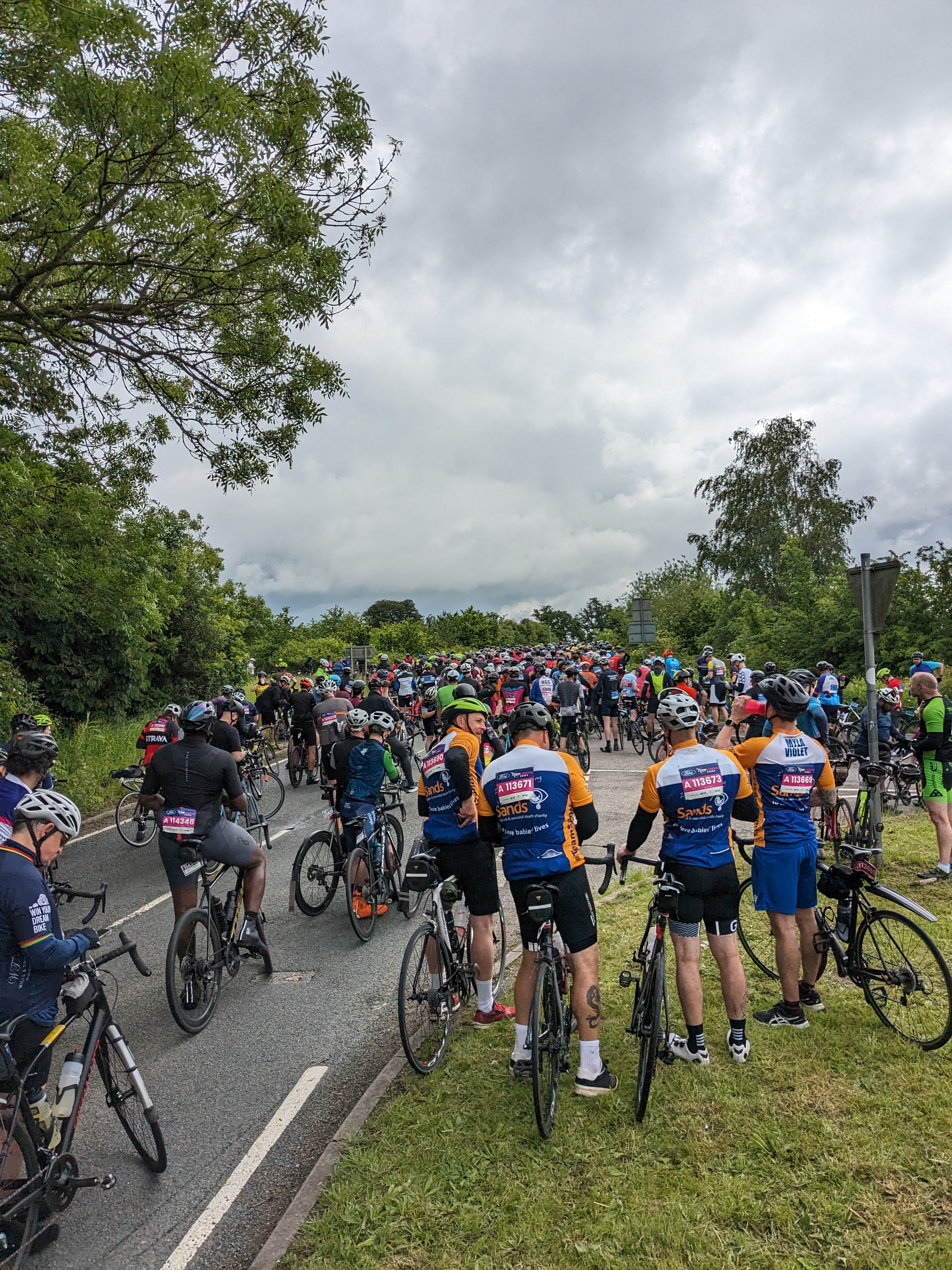
My 100-mile experience was part of an organised sportive which has its pros and cons. On the plus side, a clear course and closed roads meant I didn’t have to think about the route at all, saving a lot of time overall. There’s also no risk of getting lost, you’re not at the mercy of traffic, and strategically-placed break points serving food and water allow you to plan your stops in advance.
The best part of completing a century with a large group is the energy and excitement that fellow cyclists bring. The feeling of being part of a mass cycling event and seeing so many inspiring people put in the work right next to you is enough to spur you to the finish line.
Still, navigating congestion at particularly busy points on the road, and remaining hyper aware of the people around me at all times, was a challenge in itself, and I’d recommend practicing riding with a large group beforehand if you can. Signing up to another event or simply joining a cycling club are both good options.
100 miles is always going to hurt - but you can minimise the pain by making sure your bike fit is suited to the distance
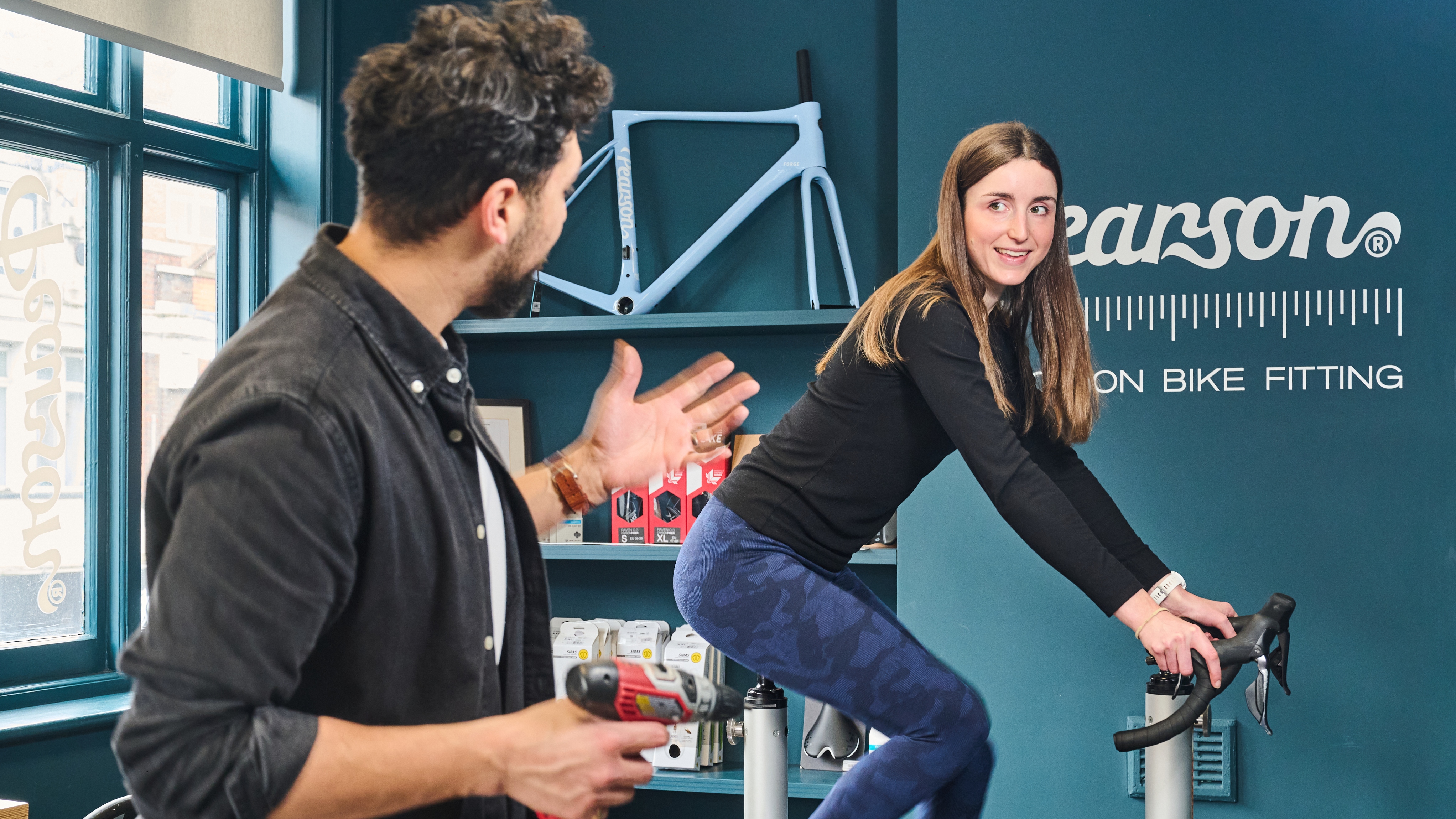
Ellie had a bike fit ahead of the ride, but might tweak it for longer events
The final miles were where the fatigue really set in, and a lot of that was down to discomfort on the bike. Interestingly, most of the pain I experienced in the closing miles was in my shoulders, arms and elbows. I was four hours in with a couple more to go and the weight going through my arms was causing them to go tingly and numb. It was manageable, but meant I kept having to shift to shake out my upper body.
The most punishing stretch was 80 to 100-miles, as expected. The longest ride I’d completed in a day before was 77 miles and my body was feeling every pedal stroke and bump in the road as I rode into the unknown. The discomfort wouldn’t budge, and all my focus went towards getting over the finish line and off my bike.
If I take on another ride of this distance - which I’m sure I’ll do - I’ll probably replace my saddle with one more suited to my anatomy, and buy a shorter stem to reduce the amount of weight going through my upper body. I don’t expect it to be easy next time, but honing in on a few finer details should make it slightly less uncomfortable.
As Phil Burt, former lead physiotherapist at British Cycling and Team Sky consultant, once told Cycling Weekly: “Bike-fit needs to be an evolution rather than a revolution. Many people will have a bike-fit, get put in one position, and leave it. But bodies are adaptable, and the bike is adjustable — the right fit is a marriage between the two.” Personally, I would adapt my fit to suit a longer day in the saddle, which would mean prioritising comfort over speed with a slightly more upright stance.
Finishing isn’t the same as finishing strong

The finish line was a welcome relief, this time
What did I learn from the experience? Aside from newfound strength in my quads, the biggest lesson I took from the event was that there’s a big difference between simply finishing a ride and finishing strong. Whilst I did get to that line, I could have saved myself a lot of grief by eating a little more and perhaps optimising by bike fit for the distance.
But cycling 100-miles is meant to be challenging - it’s the reason I signed up to RideLondon in the first place. I learned so much more about my ability on that ride because it was tough, and I feel much better placed to take on another ride of that ilk now that I’ve experienced a few of the pitfalls.
100-miles is a barmy but brilliant distance that holds your limits up to your face and asks you to push through them. Which I did, and for that I’m extremely proud.

Thank you for reading 20 articles this month* Join now for unlimited access
Enjoy your first month for just £1 / $1 / €1
*Read 5 free articles per month without a subscription

Join now for unlimited access
Try first month for just £1 / $1 / €1
Ellie Donnell is a contributing writer for Cycling Weekly and has written for a broad range of titles including Delicious Magazine, Co-op, The Independent and SquareMeal (where she currently holds the role of Managing Editor). While her specialism is in food and drink, Ellie is hugely passionate about fitness and practices a 'hybrid' approach to training covering running, weightlifting and cycling. Her love for cycling has flourished in recent years, causing her to purchase her first carbon road bike, participate in a duathlon and tackle a three-day cycling tour from Reading to Devon – although you’ll often find her doing laps of Richmond Park at the weekend.
-
 Cycling's riders need more protection from mindless 'fans' at races to avoid another Mathieu van der Poel Paris-Roubaix bottle incident
Cycling's riders need more protection from mindless 'fans' at races to avoid another Mathieu van der Poel Paris-Roubaix bottle incidentCycling's authorities must do everything within their power to prevent spectators from assaulting riders
By Tom Thewlis Published
-
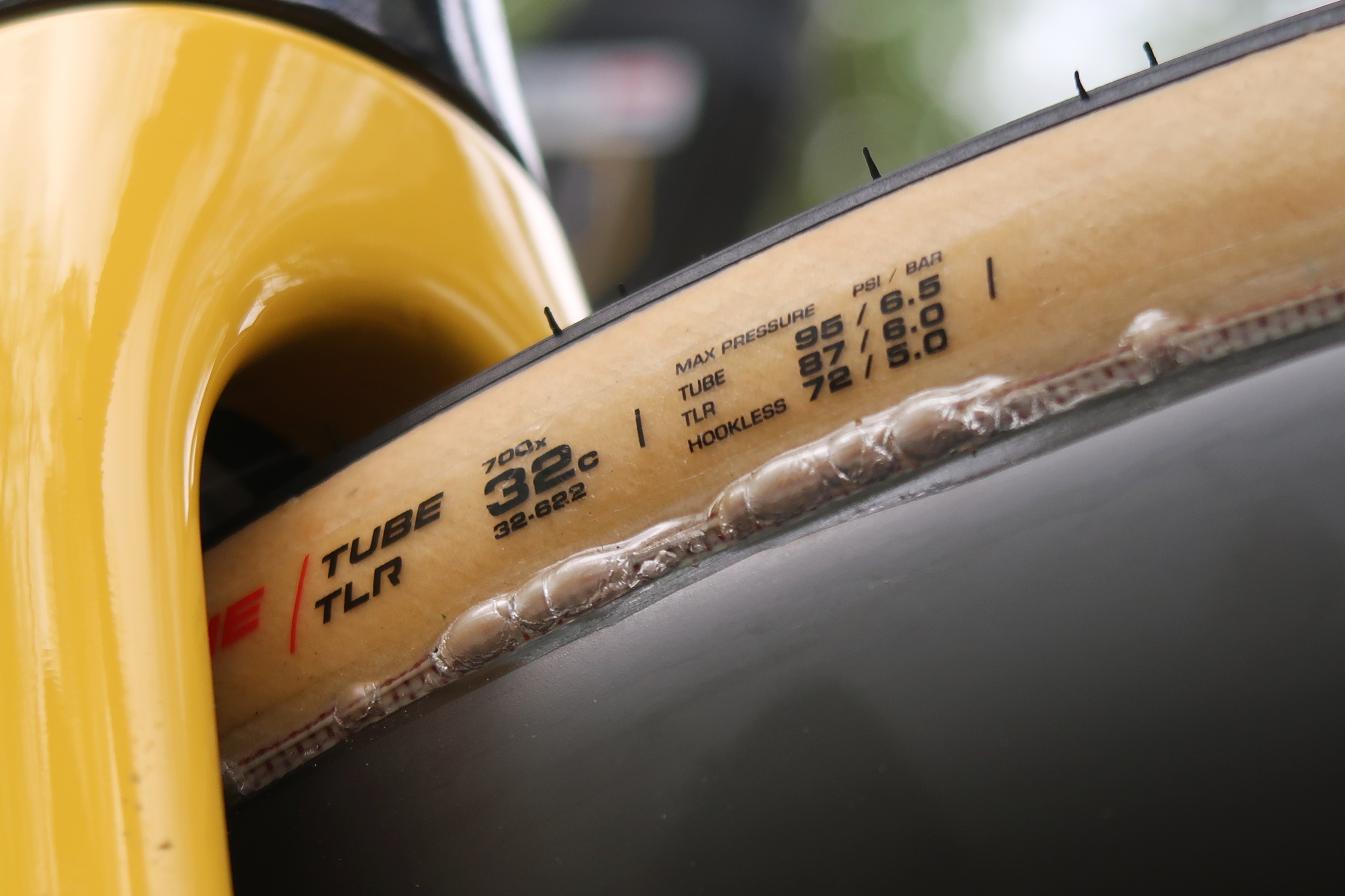 Why Paris-Roubaix 2025 is proof that road bike tyres still have a long way to go
Why Paris-Roubaix 2025 is proof that road bike tyres still have a long way to goParis-Roubaix bike tech could have wide implications for the many - here's why
By Joe Baker Published